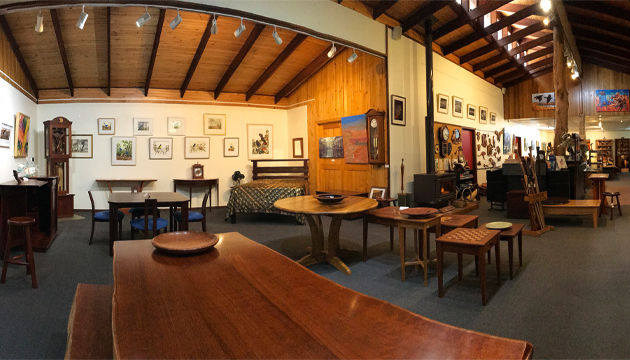The Pemberton Fine Woodcraft Gallery and Cafe in south-western Australia is keeping alive the area’s traditions of using beautiful jarrah, karri and other timbers.
Story Jill Griffiths
The Pemberton timber mill has stood idle since 2016, but forests and timber remain at the heart of the south-western Australian town. The beautiful karri and jarrah forests that surround the town are a drawcard for national and international visitors, and places such as the Pemberton Fine Woodcraft Gallery and Cafe fill a vital niche for locals, visitors and artisans.
Henk ‘HW’ Dirks is among the craftspeople exhibiting and selling in the gallery. Henk and his wife Deborah bought 3.5 hectares of jarrah and marri forest on the outskirts of Pemberton because they wanted to save it – a personal action against what they saw as the loss of the forests. A small amount of timber was cleared to make way for their house, but they couldn’t bear to just pile it up and burn it. “It was too good to chop up for firewood,” Henk says, his Dutch accent still strong, despite decades in Australia. “We had the wood advertised for free but people didn’t take it. We just didn’t want to waste it.”
Henk was a toolmaker by profession who had become frustrated with the toolmaking business in Australia, where hot workshops affected the quality of the finished product and frustrated his desire for precision. He’d always loved clocks and had bought clocks and watches from a young age, so it was a natural progression that he would start making wooden clocks. Initially, it was a way to use the timber around his property.
“I watched a clockmaker and thought ‘I can do that’,” he says. “Then I did the next bit. And the next. I made the cabinets. Put in the movements. I made one. Then I made another one.”
This story excerpt is from Issue #126
Outback Magazine: Aug/Sep 2019










